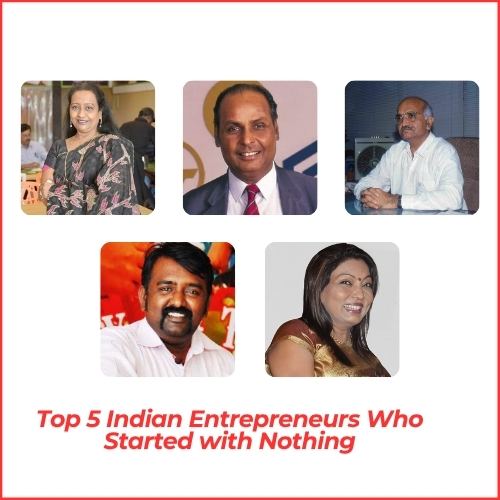Crowdfunding is an online method of raising funds for a creative project, a commercial idea, or a personal cause. Crowdfunding platforms are used by startups, small businesses, nonprofits, and regular individuals to connect with people who want to support them and help them realise their financial goals for launching a business or product, or supporting their cause.
When you use a crowdfunding site, you must first register and create a profile. After that, you may build your own personal campaign or fundraising page, where you can tell your narrative about why you’re raising money and what you need it for, set a fundraising goal, and begin raising funds. You can begin collecting funds within days, depending on the type of crowdfunding site you use.
Some websites run 30-day promotions (or longer). Funds are deposited straight into the bank account that you attach to your fundraising account when you register. The funds you raise through crowdsourcing must be used for the same purpose you stated on your crowdfunding site with your contributors or investors. People can use crowdfunding to help pay for medical emergencies, small businesses can use crowdfunding to maintain growth in exchange for goods or services they give, nonprofits can use crowdsourcing to continue supporting their goals, and so on.
Individuals interested in investing in startups through crowdfunding can also purchase shares for a set price. Keep in mind that you may get a return on your investment if the firm is sold or goes public, or you may lose money if the company fails to take off and must close down. Most crowdfunding platforms charge a platform fee based on a percentage of the funds raised, as well as a payment processing cost of typically 2.9 percent + $0.30 for each transaction. Platform fees for the companies covered in this article range from 3.2 percent for Indiegogo to 5 percent for Patreon.
The top six are ranked based on their simplicity of use, history of helping clients raise money, price options, social network integrations, and more. These platforms will assist you in raising funding for your project, concept, or cause, whether you are an entrepreneur, an artist, or a climate change campaigner.
1. Indiegogo
Pros
- Great for entrepreneurs and investors
- Worldwide operations
Cons
- Charges a 5% platform fee plus a third-party payment processing fee
Indiegogo is the clear winner for best overall because of its track record of accomplishment in helping to fund over 800,000 ideas worldwide since 2008. Danae Ringelmann, Eric Schell, and Slava Rubin launched Indiegogo, Inc. in 2008 to raise funds for their own causes and ideas. Every month, about 15 million individuals visit the Indiegogo website, where over 19,000 campaigns are launched.
You can start a crowdfunding campaign for any concept or product you wish to launch with Indiegogo, which is available in 235 countries and territories.
Their solutions allow you to market your campaign by integrating with other platforms like Meta and Google. You’ll get your money within 15 business days after you’ve finished raising funds. You can also become a backer of one of the many thousands of ideas and products.
2. SeedInvest Technology
Pros
- 600+ investors
- Helps raise awareness among venture capital firms and angel investors
- You don’t have to pay any fees if your fundraiser isn’t successful
Cons
- All startups go through an intense vetting process, but not all are selected
SeedInvest Technology, based in New York City, was established in 2012 with the purpose of allowing investors to support early-stage entrepreneurs. They have backed over 250 startups to date, making it suitable for ventures in need of seed money.
If you’re a startup founder looking to raise funds through SeedInvest Technology, you’ll need to create an account, fill out an application, and go through a screening procedure. This will include a thorough investigation. If you have been invited to fundraise on the site, you must first create a profile before beginning the fundraising process.
Mightycause
Pros
- Compatible with customer relationship management (CRM) systems, like Salesforce
- Social media integrations are available
- Option to set up year-round fundraising, special events, giving days, and crowdfunding campaigns
Cons
- CRM connectors, for example, are included in the platform’s premium subscription.
- Mightycause was established in 2006 as a fundraising platform to assist NGOs and individuals in generating funds for their causes using the internet. Its fundraising versatility gives it an advantage in this category for nonprofits seeking donations since it has helped over 150,000 causes raise the funds they required to reach their objectives.
From peer-to-peer fundraising to giving days, the site offers a variety of campaigns. Mightycause takes a 1.2 percent processing fee + 29 cents per transaction on average. The platform has a free “beginning” option where you can raise money and establish year-round, peer-to-peer, event-related, and other fundraising campaigns.
3. StartEngine
Pros
- Can invest as little as $100
- $450 million raised
Cons
- Relatively new company
StartEngine is a platform that allows anyone to become an investor in early-stage firms. It was founded in 2014 by Ron Miller and Howard Marks, with Kevin O’Leary, TV host of ABC’s “Shark Tank,” as a strategic advisor. It is our choice as the greatest crowdfunding platform for investors because of its user-friendly investment method. With as little as $100, you can start investing in any of the firms featured on its website, ranging from biotech pioneers to travel and tourism entrepreneurs, depending on the share value mentioned for each company. Each company’s profile provides information such as its value, price per share, number of investors, and more to help you make an informed investment.
4. GoFundMe

Pros
- 0% platform fee
- Flexibility to raise money for yourself, a friend, or a charity
- 24/7 expert support available
Cons
- Credit and debit card transaction fees
GoFundMe is a clear choice for personal fundraising requirements since it is a versatile site that has helped individuals raise funds for everything from personal healthcare expenditures to keeping local companies afloat. Its track record includes raising more than $9 billion in donations from over 120 million people.

It was founded in 2010 and has since grown to become one of the most popular online fundraising platforms, with more than $9 billion raised from over 120 million donations. Its popularity and ease of use make it the finest platform for individuals.
A GoFundMe page may be created in three easy steps. To begin, outline the amount of money you wish to raise in your campaign. After that, explain your tale using images and videos. For the final step, share your campaign with your friends and family via social media, text messages, and email.
Crowdfunding For Startups
Conclusion
Many people believe that crowdfunding is a simple or free way to get money, but it takes a lot of work to create a project that backers would consider valuable. Success isn’t guaranteed, and as the popularity of crowdfunding grows, backers are becoming more discerning about the initiatives they support.














